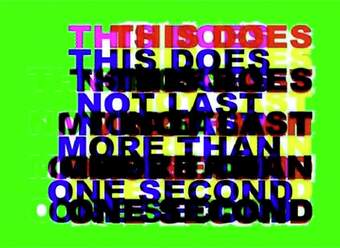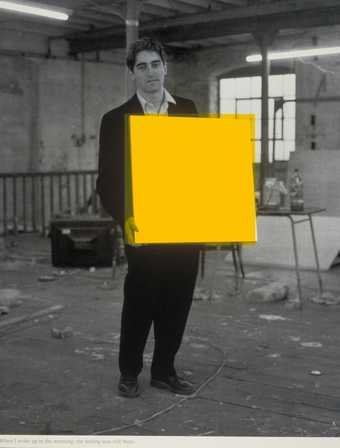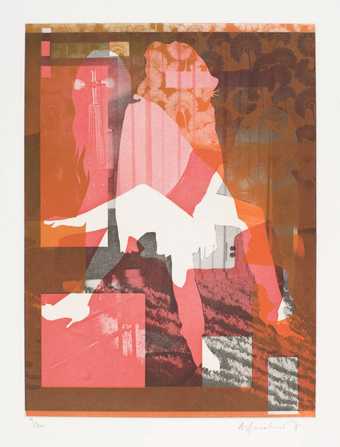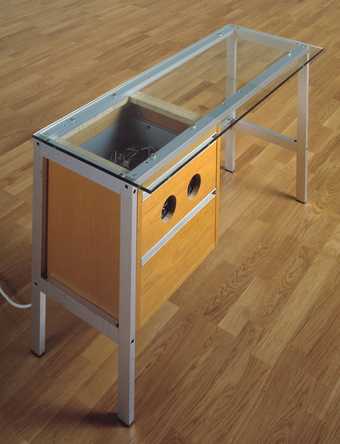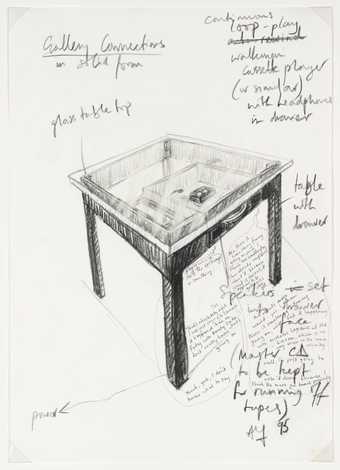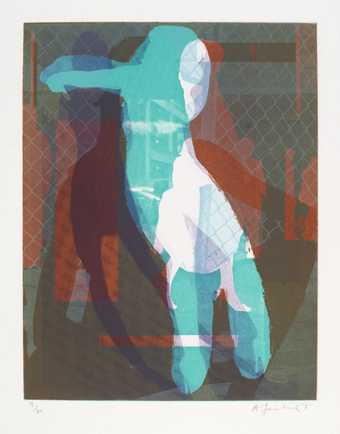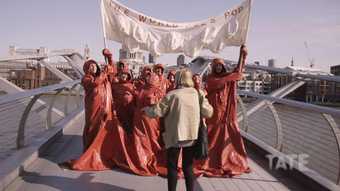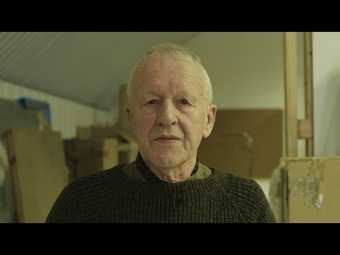My kind of main impression of Angus is he had this incredible sense of humour. MAT COLLISHAW: I think he was a very polished joke teller. PAULINE DAVEY: Which I found excruciating, because I was so nervous, and he would say, ‘I’m going to tell you a joke,’ and I would just sort of freeze, and go, ‘Oh my God, I’m not going to get it!’ MC: Normally long jokes. GAVIN TURK: I think to start with it was funny, then it became annoying and irritating, and then kind of became funny again. MC: You’d sit there and kind of enjoy five or ten minutes of this slow, agonizingly slow story. SADIE COLES: And an hour later… PD: An hour later… SC: …and 20 Negronis, you would get to the punchline. [Music] NICHOLAS SEROTA: He was making art that was very serious in its intent, but not in any sense claiming to be great art. SC: He wasn’t careerist in any way whatsoever. TT: He didn’t really want to just have a signature art, which would have made his life much easier. GT: He didn’t make anything that you could look at and say, ‘Oh, that must be made by Angus Fairhurst, and yet I always had a feeling that it could only be made by Angus. [Music] [Phone] [Answering phone] Hello Salama-Caro Gallery SC: Gallery Connections was this work that had a huge impact on the gallery scene in London when Angus actually did it. [Phone] F: Hello. M: Hello? F: Can I help you? NS: It’s a wonderful piece about the kind of absurdity of the art world. [Phone] [Answering phone] Victoria Miro Gallery. [Echo] …Gallery. TT: He crossed the telephone wires of different commercial galleries in London. MC: And then simultaneously dialed two different numbers and then sat back and waited for them to answer the phone at the same. Tate Gallery. Royal Academy, hello? SC: When the gallery desk person answered, ‘Hello, Anthony D’Offay,’ which is often me, for instance – I can hear my voice on that tape! PD: Can you? SC: Yes, it’s a bit scary. [Phone] Anthony D’Offay. SC: The other person on the other end would be the Lisson Gallery, and they had also just been dialled, so they would say, ‘Hello, Lisson Gallery.’ [Phone] Hello. SC: And then the two gallery girls would be confused, and say, ‘But you rang me!’ TT: I mean, it is really amusing, to listen to this confusion. [Phone] Hello? Hullo, yes? Sorry, I wasn’t calling anyone, I was actually answering our phone. Oh! SC: Everybody totally paranoid, that there was some Machiavellian plot that had been instigated by somebody. But it turned out it was just Angus! NS: I think he was undoubtedly having a bit of a go at the modern art world! GT: I don’t think it was an overt criticism, I think it was more of a surreal gesture. [Phone] [In unison] Oh well, bye bye. [Music] NS: And the humour was a way sometimes also of perhaps hiding his shyness. The gorilla suit, I’m sure, was very much about hiding his shyness. To some extent I think it was his alter ego. I mean, it’s the bit of him that he couldn’t show everyone. TT: In the early days he was always drawing cartoon gorillas, and again it was interesting slapstick kind of situations. SC: I think the gorillas are very complex, because on one hand they represent sort of base nature, you know, like [growls] kind of dumbness – but on the other hand, they are closest to us. MC: The gorilla, I think, was kind of a substitute for him, that it shared 97 percent of the same DNA, and because there was a certain mystery going on behind the eyes that you can’t really communicate with. SC: It’s also sort of funny to see a great big gorilla doing stupid things like eating fish and chips! [Music] [Gorilla sequence] GT: The humour in Angus’s work has never been a laugh out loud humour. TT: But underneath it, actually, there was quite a serious, almost like this kind of sense of melancholy, if you like, which is perhaps why he was able to… be was such an interesting artist. GT: There is no reason why humour and black humour, melancholy, can’t all exist in a sort of, in a symbiotic relationship, and all in the same image. SC: You can look at his work now and only focus on the melancholy, but that wouldn’t be the whole picture. NS: I think the interesting thing about so much of the work is that he doesn’t give easy answers, and there’s a lot there’s hidden. There is a very strong sense of mystery. M2: I think maybe if he wasn’t an artist, a good career for him would have been, you know, sometimes in a movie or a soap opera, suddenly you get somebody walk in through the door of a scene, and somebody’s just finishing off a joke, so they give the punchline – ‘And the penguin said that it was orange, green,’ or something, and everybody laughs. But you never hear the beginning of the joke, and it’s never been designed like that. It’s kind of got humour in there, but the meaning has been extracted from it. And I think that would be a perfect little job for Angus.

